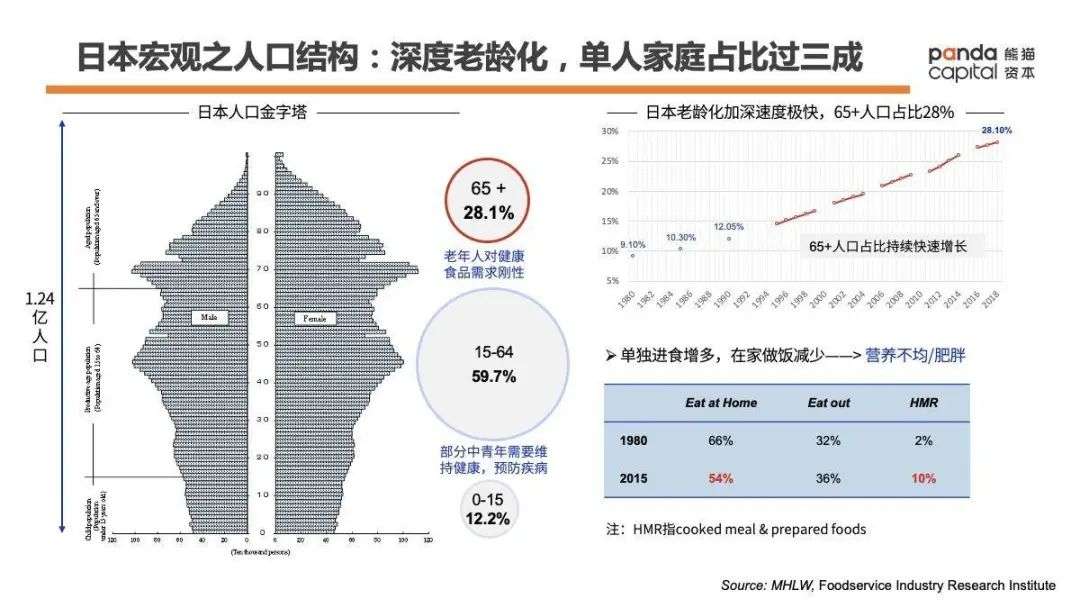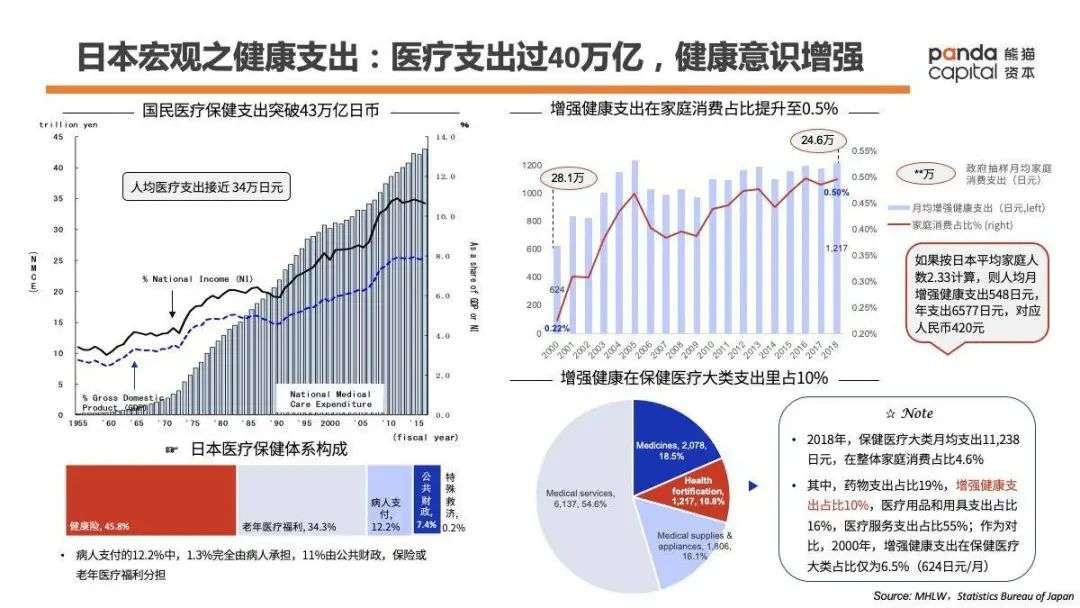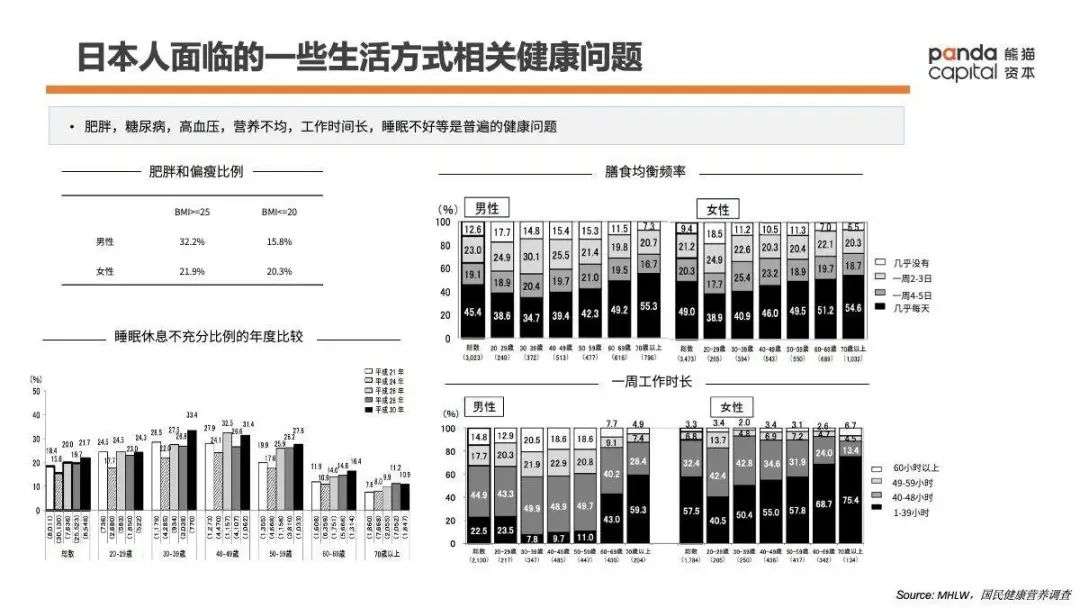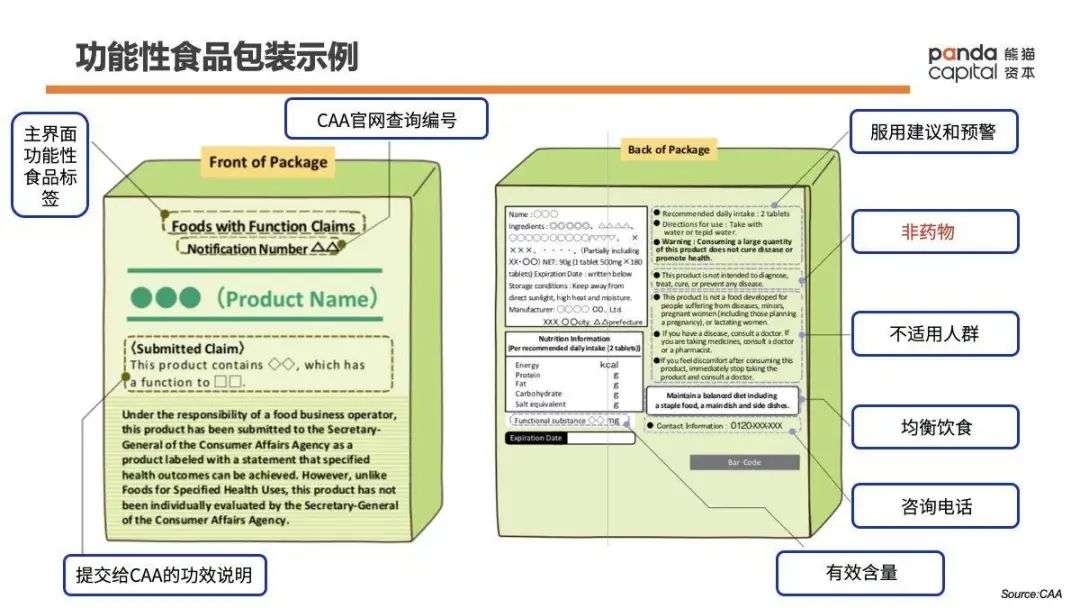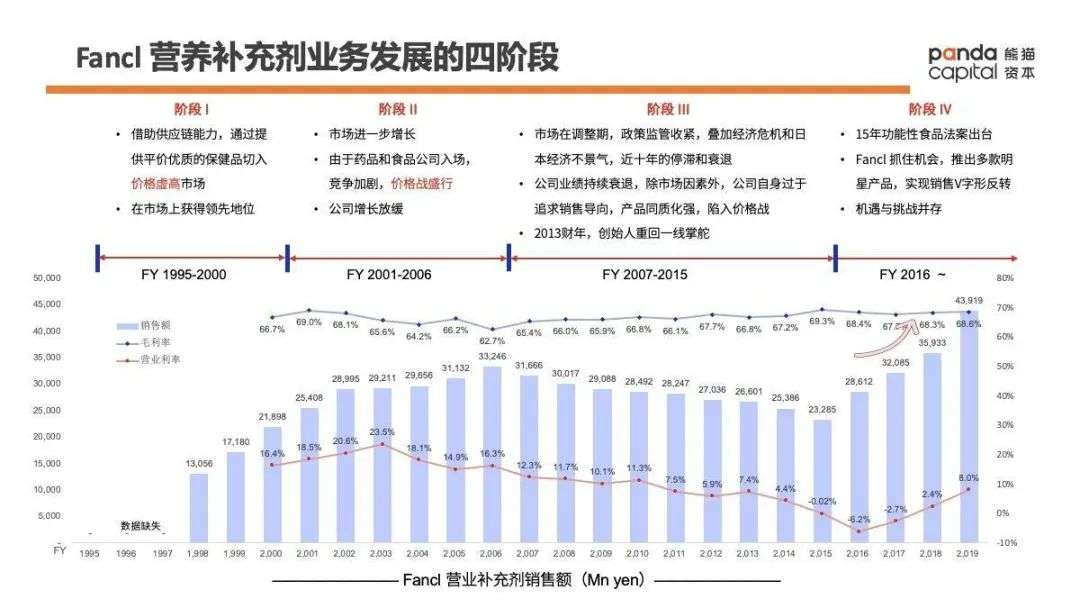Starting from consumer insights, emerging from core barriers, and finally becoming a powerful solver of social problems
Editor’s note: This article comes from WeChat public account “>” Panda capital “(ID: pandavc) , author: Zhang Lu Lu.
Whether Chinese consumers have been chasing health and health, or this year’s new crown epidemic has triggered a health awareness, functional + healthy food, functional health products, etc. have become Consumer preference. At the same time, whether it is a traditional food and beverage manufacturer or a new consumer startup, many have also chosen function + healthy food and beverage as the direction of efforts to capture consumers.
This consumption trend is also confirmed by the results of various research institutions:
Data provider Tastewise’s “Healthy Times: Making Food Work—Functional Food Report 2019” says that more than a third of consumers are looking for functional benefits in their food In 2019, the number of consumers looking for food, beverage and health-care functions increased by 23%. According to data from the China Business Research Institute, the functional food market is expected to exceed 600 billion yuan in 2022.
Since the end of 2019, the investment team of the Panda Capital Consumption Group has also explored more in the field of functional health food, and has invested in several functional food companies such as vitamin supplements and healthy diet foods. Because we believe that China will have great opportunities for innovation in the field of functional foods in the future, the investment team has also conducted in-depth research on the vertical categories of functional foods and some leading companies.
Among them, Lulu Zhang, the investment manager of Panda Capital, conducted a detailed analysis of the nutritional supplement business of Fancl, a Japanese company, and shared it internally. In this research, Lu Lu reviewed Fancl’s annual reports, quarterly reports and other performance data, as well as a large number of materials in the industry, made detailed statistical analysis of the data, and tried to present Fancl’s development history from the data for 30 years. Perhaps this is one of the few or even the only in-depth studies of Fancl’s nutritional supplement business in the investment industry.
Today, we will share with you the essence of this research. In this study, you will see the following sections:
-
First, who is Fancl
-
Second, analysis of Fancl’s Japanese society, policies and regulations
-
Three, Fancl nutritional supplement business development process
-
1) Product strategy
-
2) Channel strategy
-
3) Marketing strategy
-
Four, some inspirations from Fancl for Chinese entrepreneurship and investment
This article takes about 3029 words to read and takes about 30 minutes
When it comes to Fancl, consumers, especially women, are more familiar. Some people have used Fancl’s facial cleanser and cleansing oil, and some people have taken Fancl’s vitamins. Many pregnant women also use Fancl’s sunscreen, eye cream and other skin care products. The main reason is that Fancl’s skin care product series is one of the earliest skin care products that began to claim “safety and no additives”.
Fancl has also been very successful in the business of supplements. In the course of more than 20 years of development, consumer needs, policies and markets continue to change. Fancl continuously adjusts products, channels and market strategies, and eventually becomes a leading company in this field in Japan. What mysteries can we learn from?
First, FANCL nutritional supplement business introduction
In the 1970s, Japan’s Fancl founder Chi Sen Hyunji’s wife was troubled by skin problems caused by skin care products. So in 1982, he founded Fancl and first introduced skin care products without small packaging, winning the market and word of mouth. In 1994, when it was generally high-priced health food in the market, Fancl launched nutrition supplements at reasonable prices, which developed smoothly and became another major cornerstone business after successful cosmetics. With the core of “beauty” and “health”, Fancl has rapidly developed into one of the most popular brands in Japan.
Since then, the two major businesses of no added skin care products and nutritional supplements have been taken together, laying the foundation for the future development of Fancl. Fancl currently has seven business units: Fancl Beauty Products, Fancl Nutritional Supplements, Fancl Germinated Rice, Fancl Green Juice, Fancl Underwear, Beauty Brand Attenir and Skin Care Brand boscia. In fiscal 2019, Fancl’s overall sales were 122.5 billion yen (approximately 7.85 billion yuan), of which cosmetics accounted for 59% and nutritional supplements accounted for 36%.
In the nutritional supplement section, in 2015, the Japanese government launched the “Functional Food Labeling System”, which further lowered the threshold for functional food labeling, which is a great benefit to the functional food industry. FanclTaking full advantage of this opportunity, the sales of nutritional supplements have nearly doubled. At present, Fancl nutritional supplements have a market share of 18%, making it the largest nutritional supplement manufacturer in Japan.
Second, Analysis of Fancl’s Japanese society and policies and regulations
In September 2019, Kirin Group, Japan’s second-largest beer brewer, spent 129.3 billion yen (approximately RMB 8.6 billion) to acquire a 30.3% stake in Fancl’s founders and their relatives. Kirin Group President Yoshinori Isozaki emphasized that in solving “social problems”, the direction of Kirin Group and Fancl is very consistent. The social problems he mentioned are behind the market demand derived from Japan’s ultra-aged and declining birthrate: nutritional supplements, disease prevention, and anti-aging.
We found that the strong development of Fancl’s nutritional supplement business is closely related to Japan’s increasingly serious social problems. In the research of Panda Capital, we classify it into four factors, and analyze it in detail later.
-
Severely aging Japanese society;
-
The burden of medical expenditure continues to increase;
-
People’s health awareness is constantly increasing;
-
The functional food market is developing rapidly.
1. Japan’s population structure is deeply aging, and the proportion of single families exceeds 30%
As of 2019, Japan’s total population is 124 million, and its aging is accelerating. According to the data released by the Ministry of Internal Affairs and Communications of Japan in September 2019, Japan’s 65-year-old and above account for 28.1% of the total population in 2019, and the population is getting longer and longer, with an average life expectancy of 81.25 years for men and 87.32 years for women.
Secondly, Japan’s birth rate continues to decline. According to data released by the Ministry of Health, Labor and Welfare in Japan, the number of newly born Japanese people in 2019 is about 864,000, corresponding to seven thousandths of the overall population. This is the first time since the population record was recorded in 1899 that the population was born below 900,000, totalThe birth rate is 1.42. Japan’s population structure is deeply aging.
At the same time, the family structure is changing. The average number of family members fell from 3.41 in the 1970s to 2.33 in 2018 (2018), the proportion of single-person households rose to 34.6% in 2019 (2019), and the working proportion of minor mothers rose to 70.8% ( 2017). As a result, the phenomenon of reduced cooking at home and increased eating alone has also become one of the factors that cause dietary imbalances among young and middle-aged groups and cause obesity.
Under the above backgrounds such as aging and declining birthrates, Japanese residents’ overall demand for disease prevention and health care is becoming increasingly rigid. The elderly over 65 years old especially need healthy foods to prolong their lives. Young people and middle-aged people aged 15-64 are more focused on disease prevention. They also need healthy foods and nutritional supplements to maintain their health. As a result, health foods are no longer exclusive to the elderly, and the penetration rate among the entire population has room for further improvement.
2. Japan’s medical expenditure has increased steeply, and people’s health awareness has been continuously enhanced
Social problems such as the aging population in Japan are directly reflected in the increasing national medical expenditures and family health expenditures.
It can be seen from the digital chart of national health care expenditures in Japan over the years, from 1965 to the present, national health care expenditures have shown a steep growth trend, and the 2017 data shows that national health care expenditures exceeded 43 trillion yen The medical expenditure per capita is nearly 340,000 yen. Although nearly 50% of it is covered by insurance, the huge medical expenditure still exerts great pressure on the government department, so the government department has a strong incentive to encourage the development of health foods, nutritional supplements and other products from the prevention level. In 2013, under the personal promotion of the then Prime Minister Abe, Japan began to study the relaxation of market access standards for functional foods with a view to promoting market development and reducing medical expenses by allowing citizens to self-care.
At the same time, the health awareness of Japanese residents is also increasing. In 2018, in the Japanese government’s sample survey of household monthly expenditures, a family’s monthly consumption was approximately 246,000 yen, of which health-enhancing expenditure reached 1,217 yen. It is worth noting that in 2000, this expenditure was only 624 yen, that is to say, in the case of stagnation in overall household consumption growth, health-enhancing expenditure nearly doubled. Calculated based on an average of 2.33 people in Japanese households, corresponding to monthly per capitaHealth expenditure is 548 yen, and annual health expenditure is 6,577 yen (about 420 yuan). In addition, the proportion of health-enhancing expenditures in the health care category also increased from 6.5% (624 yen) in 2000 to 10% in 2018.
3. Unhealthy lifestyles also cause various health problems
Just like the residents of many countries including China, Japanese people are facing daily “three high” diseases such as obesity, diabetes, and hypertension. Especially for those who have a job, they also face the problem of long working hours and high pressure. A survey on sleep showed that Japan was one of the countries that stayed up late and slept the least compared to many countries in Europe, America and Asia.
In terms of dietary nutrition balance, nearly half of the people cannot achieve nutritional balance, especially young people have a lower proportion of nutritional balance. For the above reasons, relying on dietary supplements to supplement some of the human body’s necessary nutrition, the plan to enhance health has a basis that is accepted by the public.
4. A new functional food bill was introduced in 2015 to activate market innovation
As we mentioned earlier, the Japanese government has sufficient incentives to promote the development of healthy foods and functional foods from the level of disease prevention due to the pressure of medical expenditure.
The new regulations were introduced in 2015, and the full name was “Functional Food Labeling System”. The big difference of the new regulations is that the government no longer actually evaluates the safety and effectiveness of functional foods. Companies only need to submit to the Japanese Consumer Agency 60 days before the sale of the scientific basis that matches their claimed functions for the record, marking The process is greatly simplified. In addition, the new regulations in 2015 added skin, eyes, mental state, sleep, fatigue and other body parts or states, which is more flexible than the certification of specific health foods (limited to the 7 hard core areas such as fatty acids and blood sugar) It is also more in line with the more diverse health demands of contemporary people.
Another benefit of the new regulations is that the original FOSHU (Foods for Specified Healt)h Uses) The application takes time (takes 2 years +) and the enterprise needs to spend hundreds of thousands of dollars to complete the test and other situations no longer exist. Whether it is a large enterprise or a small and medium-sized enterprise, they can clearly mark their efficacy on the product, and can make appropriate publicity, so that consumers can make choices with more knowledge. The introduction of the bill greatly inspired the enthusiasm of Japanese companies to develop new products.
We can see from the data that after the introduction of the new regulations, the functional food market has grown rapidly from 2015 to 2019, and the market will exceed US$2.4 billion in 2019. Among them, the data in 2017 shows that food accounts for 30%, beverages account for 30%, and nutrition products account for about 40%. In this process, consumers’ preferences gradually migrated from ordinary food to functional food.
From a larger perspective, the overall Japanese health and beauty market (H/B market for short) is US$21.8 billion. H/B food is divided into two categories, one is healthy food, such as adding functional ingredients to daily food and beverage, accounting for about 60%; the other is functional food, such as vitamin tablets, etc., accounting for about 40% .
Three, Fancl business supplement business development history
If Fancl launched its nutritional supplement business in 1994, it can basically divide the development of Fancl’s supplement business into four stages.
1995-2000: With its own supply chain capabilities, Fancl cut into the high-priced health care products market by providing affordable and high-quality health care products. Fancl nutrition supplements business soon gained a leading position in the market. Sales are increasing year by year.
2001-2006: Fancl’s nutritional supplement business market grew further. At the same time, as other pharmaceutical and food companies also entered the nutritional supplement business, competition intensified and price wars prevailed. At this time, Fancl’s sales of the business
